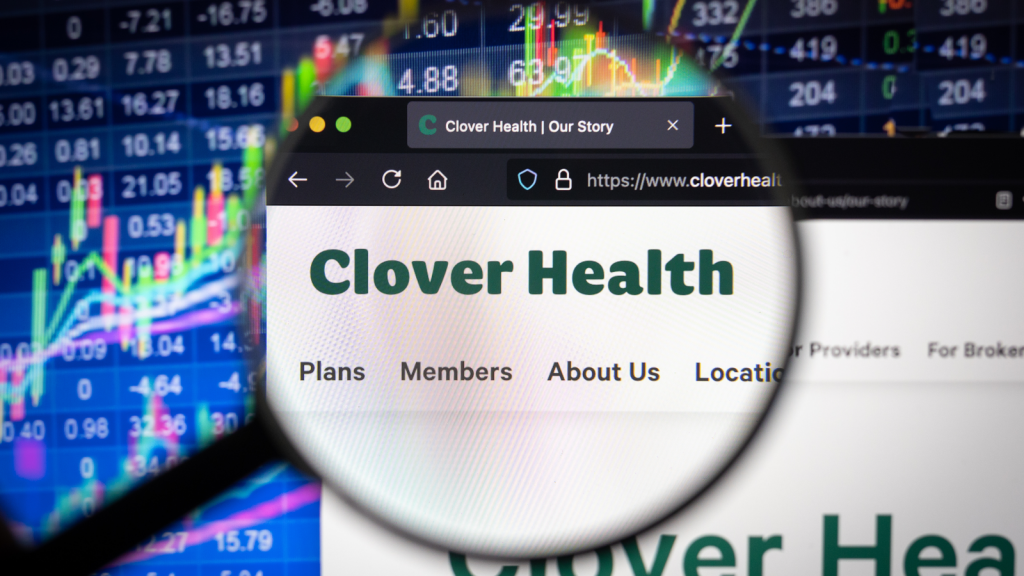Without a doubt, the outlook of Clover Health (NASDAQ:CLOV) stock has improved tremendously since I last wrote about the company in a September 2021 column.

Most importantly, CLOV stock has tumbled a great deal since September, making its valuation much less daunting. But the insurer’s fourth-quarter results and 2022 guidance indicate that it is meaningfully reducing its losses. Moreover, it’s continuing to rapidly increase its revenue.
Still, Clover’s bottom-line outlook is certainly nothing to celebrate. Also weighing on the shares’ outlook is the insurer’s continued lack of any real areas of superiority over its competitors. The absence of high-potential initiatives by the firm isn’t helping either.
As a result of these points, I remain bearish on CLOV stock and recommend that investors sell the name.
CLOV Stock: Outlook Has Improved
Since Sept. 1, 2021 in-line with my prediction at the time, CLOV stock has tumbled nearly 60%. Of course, macro as well as micro challenges caused the stock to sink during that period.
But at any rate, the shares’ price-sales ratio is just one, according to Marketwatch. And with the company’s sales continuing to surge, that number will probably continuing to trend much lower in the coming quarters.
Speaking of soaring revenue, Clover’s top line jumped to $432 million last quarter. This is up from $166.32 million during the same period a year earlier. In the company’s entire fiscal 2021, its sales soared to $1.47 billion, up from $673 million in the 2020 fiscal year.
In tandem with the low price-sales ratio of CLOV stock, the insurer’s powerful growth should enable its shares to lose significantly less than 60% over the next six months.
On the profitability front, as those who are bullish on the name excitedly pointed out, its medical cost ratio, although still absurdly high, dropped meaningfully in Q4. The company expects it to decline significantly again this year.
However, the important figure to look at here is Clover’s: medical cost ratio, or MCR. This ratio “is calculated by dividing total medical expenses paid by an insurer by the total insurance premiums it collected.”
Analyzing Clover’s Profitability
Importantly, MCR essentially shows the proportion of the premiums that a health insurer devotes to paying for the medical bills of the consumers whom it insures. Including all items, Clover’s Medicare Advantage MCR came in at a stunning 102.8% last quarter. In other words, it devoted all of the premiums that it collected from Medicare patients, plus an additional amount equal to 2.8% of the value of the premiums, to paying the medical bills of those it insures.
Consequently, all of the salaries, benefits, general and administrative expenses that Clover incurred in connection with the Medicare patients whom it insured were not covered by the premiums that it collected from the patients.
Maybe Its New Direct Contracting Business Will Help?
At first, when I looked over Clover’s results, I noted that their new Direct Contracting business could potentially be more profitable. But in Q4, Clover’s “Direct Contracting revenue” was $228.6 million, while its “Direct Contracting net medical claims incurred” came in at $235.4 million. So, Clover has the same problem in Direct Contracting as it does in its Medicare Advantage business.
For 2022, however, Clover did note that it expects its “MA MCR…to be in the range of 95% – 99%.” My initial reaction was that 95% – 99% was better than 102.8%, but that it was still extraordinarily high. And indeed, at the midpoint of the MCR range, or 97.5%, for the company’s Medicare Advantage and Direct Contracting businesses, it would still have very little revenue left over to pay its expenses aside from the medical costs of those it insures.
Based on this aforementioned revenue guidance midpoint and the 97,5% MCR figure for both categories, Clover would generate just $80 million from its two main businesses. It could use this revenue to pay for its operating expenses. However, the company expects its operating expenses, excluding certain items, “to be between $330 million and $345 million” in 2022.
Worth noting is that, in the first quarter of 2021, the MCR of UnitedHealth (NYSE:UNH) was 80.9%. So Clover’s MCR, it seems, will remain far above that of its competitors in 2022.
A Lack of Competitive Advantages and New Initiatives
Clover frequently touts its supposed technical prowess in general, and it primarily points to the Clover Assistant as evidence of its strong tech capabilities.
But the Clover Assistant appears to just be an app that enables medical professionals to easily and efficiently obtain data from various types of Electronic Health Records (EHR) systems. In 2022, it’s likely that there are many data retrieval apps that interface with a multitude of EHR systems. After all, developers make apps all the time that interface with many types of smartphones.
Adding to my skepticism about Clover’s tech capabilities, the company earned a rating of just “half a star” from the U.S. government’s Medicare regulator in Q4, according to a Seeking Alpha columnist. Conversely, in October, the Medicare regulator reported that “According to the latest data, approximately 68 percent of Medicare Advantage plans that offer prescription drug coverage will have an overall rating of four stars or higher in 2022, up from 49 percent in 2021.”
Clover’s low rating suggests that its tech prowess is not very impressive and its overall service to those it insures is not very good.
Finally, after reading the transcript of Clover’s Q4 earnings conference call, I cannot point to any new initiatives that are likely to improve Clover’s performance in the future.
The Bottom Line on CLOV Stock
The stock’s valuation has dropped a great deal and is no longer demanding, while its revenue growth is impressive.
Still, given Clover’s profitability issues and its seeming lack of meaningful competitive advantages, CLOV stock remains a sell.
On the date of publication, Larry Ramer did not have (either directly or indirectly) any positions in the securities mentioned in this article. The opinions expressed in this article are those of the writer, subject to the InvestorPlace.com Publishing Guidelines.
